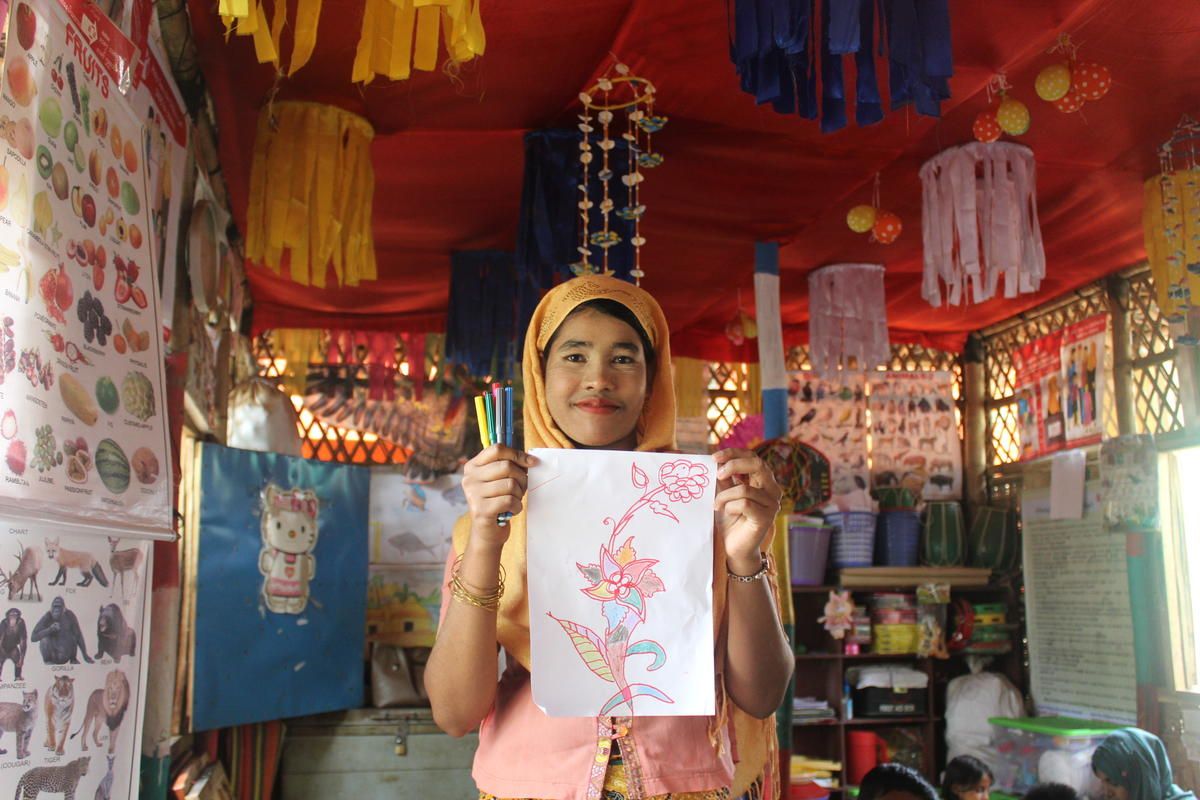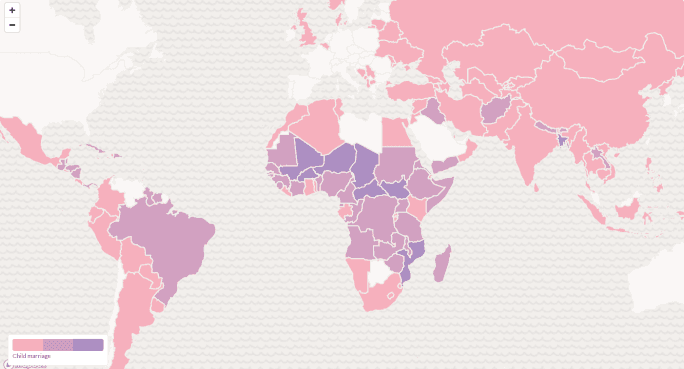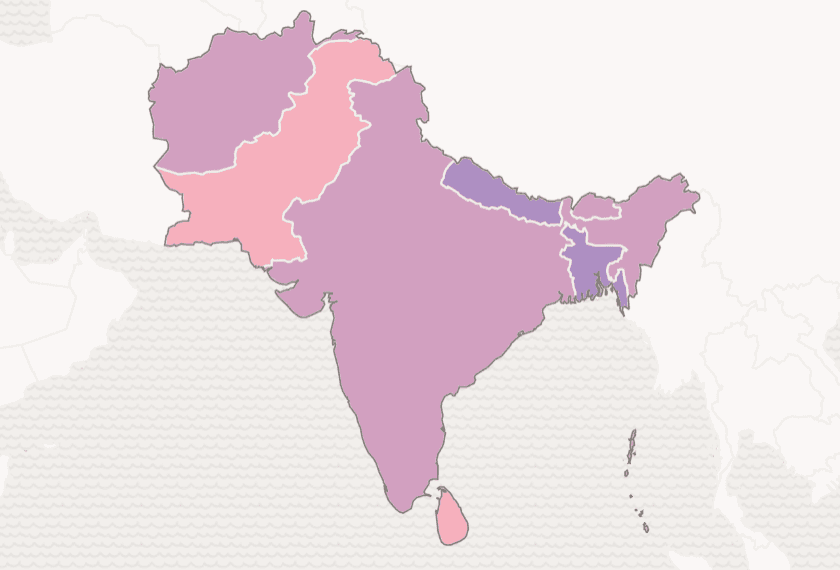
Beyond Barbie Land: the Global Burden of Child Marriage
Imagine a perfect world for women and girls where no girl became a child bride. Such a world would reflect the pink paradise of Barbie land (as seen in the recent Barbie movie directed by Greta Gerwig) in the Child Atlas, painting it all pink. In Barbie land women are empowered, have their rights upheld, and face no gender discrimination. Now, take a look at the Child Atlas below. Transitions from the pink to the purple spectrum in the Atlas depict the grim realities of child marriage across the real world, with data showing the percentage of women (aged 20-24 years) who were married or in union before age 18.
Unlike Barbie land, the real world is far from perfect for girls. As children, girls have a world full of possibilities ahead of them. Once married, their choices are restricted as girls are often found to experience early pregnancies and take premature responsibilities of unpaid domestic and care work. The dreams and aspirations of being educated and having careers like the doctor, lawyer, astronaut, or president Barbies, or to simply have basic rights are threatened for an alarming total of 640 million girls and women living today who have been married as children., more than 1 in 3 of these child brides live in South Asia.

No region in the world is yet free from the detrimental practise of child marriage and the rates of child marriage are particularly high in some countries and regions than others. The Child Atlas shows that of the top 10 countries with available data of girls facing the highest prevalence of child marriage, 5 are in West and Central Africa, 4 are in Eastern and Southern Africa and 1 is in South Asia. In most of these countries, more than half of the girls are victims of the practise including in Niger (76%), Central African Republic (61%), Mali (54%), Mozambique (53%), and Bangladesh (51%). Notably, all these 10 countries are categorised as least developed countries and 8 are fragile and conflict affected states, which suggests that countries with more restricted resources are more likely to see higher levels of child marriage. Regional averages show that the most vulnerable girls are found in West and Central Africa, where child marriage rates reach 33% and is closely followed by Eastern and Southern Africa at 32%. South Asia emerges as the next region of concern, with a prevalence rate of 26%, followed by Latin America and the Caribbean at 21%. In contrast, the regional rates of child marriage are lower in Middle East and North Africa, Eastern Europe and Central Asia, and in East Asia and the Pacific where the child marriage rates are 16%, 9% and 8% respectively.
Despite child marriage being such a grave issue globally, exploring the data in the Child Atlas reveals an additional problem: data can sometimes be quite old (for instance the latest available data for Brazil in the UNICEF database is from 2006!) and in some countries lacks meaningful disaggregation between different groups of children. But relevant and up-to-date data is essential to tackle the issue, and this indicates the urgency for scaling up investment on data collection to monitor progress and chart the way forward.
Barbie Land is, indeed, a land of dreams where girls do not get married as children and are free to pursue anything they aspire to become. The fact that child marriage is already rarely found in some high-income countries like Belgium or Norway, along with the promising progress made in some low and middle-income countries like Rwanda and Maldives, shines a ray of hope for all girls worldwide. Expedited and targeted policies along with concerted efforts from national and global stakeholders can safeguard the future of girls and women worldwide and eliminate this harmful practice. A Barbie land in the Child Atlas depicting no child marriage is not impossible after all.
Related stories:
Related stories

How a Soap Opera Helped to Reduce Child Marriage
Child protection (CP)
Child protection (CP)
2025-12-09

Does Insurance Benefit Child Health? Lessons from 38 Countries
Health (HL)
2025-11-19